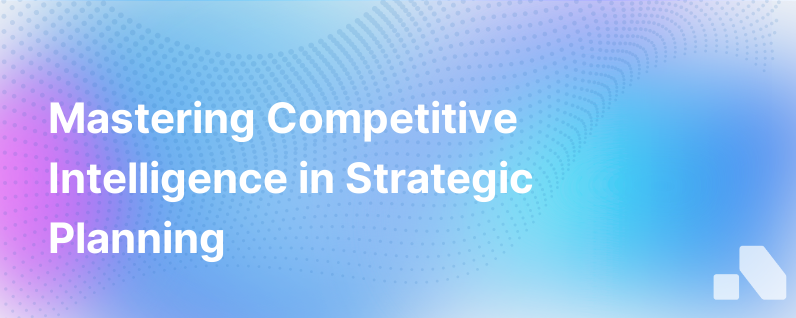
A prevailing agenda of any competitive business is to stay one step ahead. It's not a luxury but a necessity in today's hyper-competitive market. To achieve this, having a competitive intelligence (CI) system in place is essential.
CI brings you an edge in today's market by informing your strategic decisions and fueling your company’s growth. It paints a clear picture of your market, your customers, and, most importantly, your competitors. However, merely gathering competitive intelligence isn't enough; when done well, CI planning equips your iconic business moves to stun your competition and delight your customers.
In this comprehensive guide, you’ll understand what competitive intelligence planning entails and why it’s indispensable. We’ll also explore how to develop an effective competitive intelligence plan.
What is Competitive Intelligence Planning?
Competitive Intelligence Planning, simply put, is the process of gathering and analyzing information about your competitors and the market to inform your strategic decisions. It's a structured approach to collect actionable insights about your industry, competitors and competitive environment.
The goal of CI planning is not to mimic your rivals but to understand their operations well enough to predict their moves, find your unique positioning, and make informed decisions that yield competitive advantages.
Why is CI Planning Important?
In an era where businesses move at lightning speed and new companies are born overnight, CI planning provides a way to stay ahead. It nurtures your proactive stance in business rather than a reactive one. Here are few reasons why CI planning is crucial:
- Inform Strategic Decisions: CI planning aids in making informed strategic decisions by providing insights about competitors and market trends.
- Resource Allocation: By understanding where your competition is focusing, you can make educated decisions about your resource allocation.
- Detect Market Trends: CI allows you to spot emerging industry trends before your competition does, offering you a head-start.
- Customer Acquisition & Retention: It helps you understand what your competitors' customers value, helping you attune your product and marketing strategies accordingly.
- Risk Management: CI planning helps identify potential threats and opportunities, enabling appropriate risk mitigation strategies.
How to Develop an Effective Competitive Intelligence Plan
Creating an effective CI plan involves several steps:
-
Define Your Intelligence Needs: Identify the kind of information that will be most helpful for your strategic decisions. This can be potential competitors' moves, market trends, consumer opinions, or any other field-specific details.
-
Identifying Sources of Information: Identify where this intelligence can be found. Both external (industry reports, trade shows, competitor websites, customer reviews, press releases) and internal sources (sales reports, customer feedback) can be informative.
-
Collect the Information: Use tools and resources to gather the information. This could involve reading industry news, using online tools, or networking at industry events.
-
Analyze the Information: Interpret the collected data to gain insights that will aid decision-making. Look for trends and patterns, compare your performance against competition, and map out potential scenarios.
-
Disseminate Intelligence: Share these insights with your team. Make sure information is easily accessible and digestible so that beneficial knowledge isn't trapped in silos.
-
Implement Actions: Use the insights to inform your strategic plans and actions. Remember, the goal here isn’t merely to emulate your competitors but to outwit them.
-
Review and Update: CI planning is not a one-and-done process. Regularly review your intelligence plan and update it as market and competitive landscapes evolve.
Overcoming Challenges in CI Planning
Successful CI planning requires overcoming several challenges, including data overload, lack of a structured approach, resources, and time. Here's where AI platforms like Aomni can be a game-changer.
Aomni helps collect real-time account insight and conduct actionable competitive analysis efficiently. With it, you gain insights in 15 minutes, with zero effort required. Aomni enables not just CI gathering, but in a way that is tailored to your unique business needs, saving you precious resources and giving you the edge you need.
Conclusion
By strategically applying insights from competitive intelligence, organizations can make proactive business decisions, gain a competitive advantage, and propel their growth to new heights. Unquestionably, the process might seem daunting. Still, with comprehensive planning and AI platforms like Aomni, competitive intelligence can become an integral part of your business strategy. CI serves not as a crystal ball but a compass guiding your business navigation amid the high waves of competition.